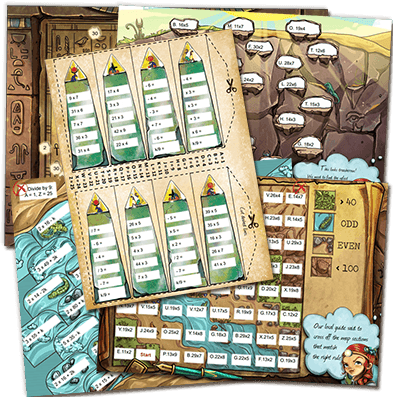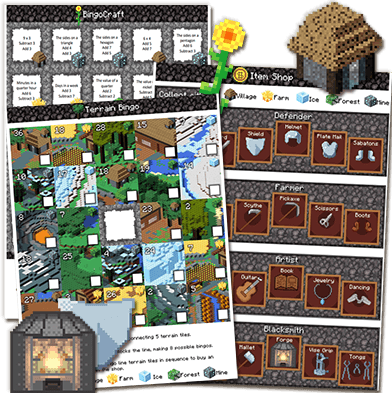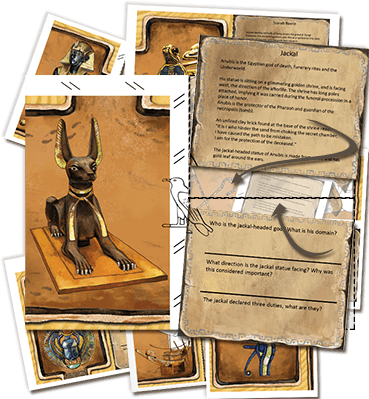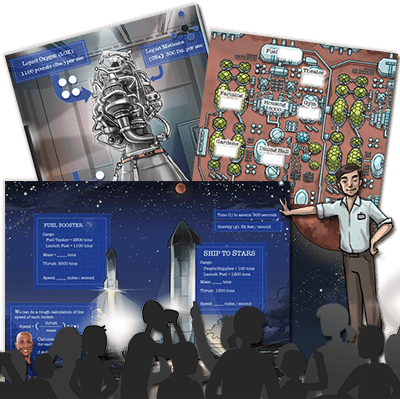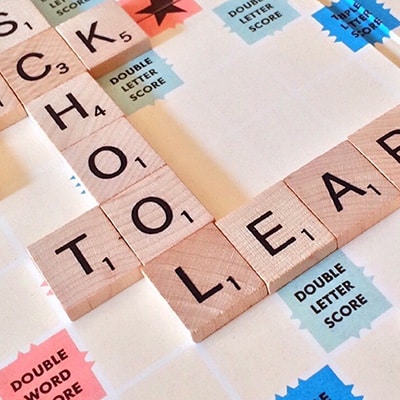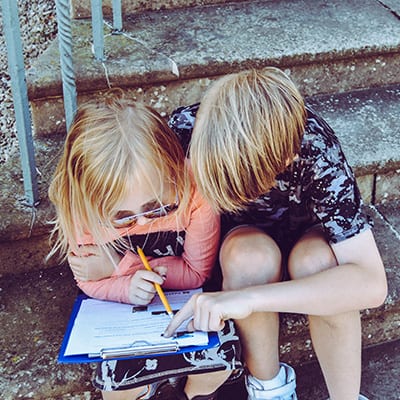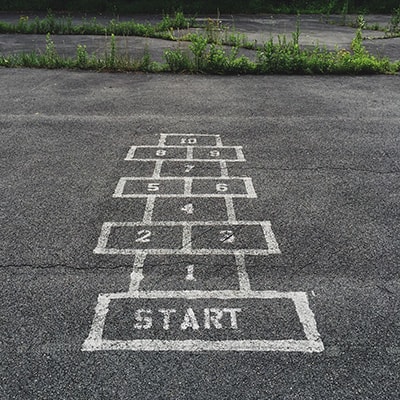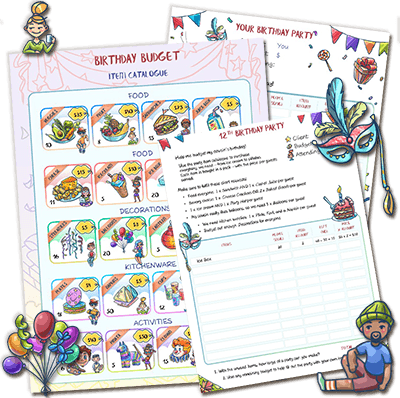The Teaching Tips Blog
Here's our complete collection of tips and teaching resources. Enjoy!

Here's a free tip from us - classroom parties are always an instant win! These kids party themes will help you plan the whole thing.
Online Counting Games
Online Counting Games Online Counting Games – Three free online counting games. Great for preschool, kindergarten or any kid who is ready to learn to count. Know number names and the count sequence. CCSS.Math.Content.K.CC.A.1 Count to 100 by ones and by tens. CCSS.Math.Content.K.CC.A.2 Count forward beginning from a given number within the known sequence (instead of having to begin at…
More...Online Math Operation Games: K-4
Online Math Operation Games (K-4) Smarty Math Games – Fourteen different free online math games that will give students practice on basic single-digit and double-digit math problems. Addition, Subtraction, Multiplication, and Division. Understand addition, and understand subtraction. CCSS.Math.Content.K.OA.A.5 Fluently add and subtract within 5. Add and subtract within 20. CCSS.Math.Content.1.OA.C.5 Relate counting to addition and subtraction (e.g., by counting on…
More...Verb e-Flash Cards – English and Spanish
Verb e-Flash Cards Verb e-Flash Cards – Perfect for kindergarten, first grade, second grade and any English language learners (ELL’s). Shows a picture, shows the verb, and says the verb. Verb e-Flash Cards Spanish Conventions of Standard English: CCSS.ELA-Literacy.L.K.1.b Use frequently occurring nouns and verbs. CCSS.ELA-Literacy.L.1.1.e Use verbs to convey a sense of past, present, and future (e.g., Yesterday I…
More...Math e-Manipulatives and Math Graphic Organizers
Math e-Manipulatives and Math Graphic Organizers Math e-Manipulatives – As you prepare for a lesson with manipulatives, you can conveniently plan activities with the eManipulatives. Then in class, students can use real manipulatives, or you can demonstrate on the computer. eManipulatives include: Base Ten Blocks, Number Line, Fractions, Fractions and Decimals, Hundred Chart, Two-Color Counters, Counters, Coins and Bills, Connecting…
More...Graphic Organizers: Elementary
Graphic Organizers: Elementary Graphic Organizers – Free and printable. Help your students children classify ideas and communicate more effectively. Use graphic organizers to structure writing projects, to help in problem solving, decision making, studying, planning research and brainstorming. Select a Graphic Organizer from the following list of links. They also have Spanish versions. The graphic organizers include: Clock, Cluster/Word Web…
More...School Radio – Animated Stories for Children
School Radio: Animated Stories for Children School Radio – Free audio stories with video animation sponsored by the BBC so the standards are the United Kingdom’s National Literacy Strategy framework. Text is available for students to read before or after. Stories include: The Tales of Beatrix Potter, Jack and the Giant Beanstalk, Little Red Riding Hood, Viking Sagas, Oliver Twist,…
More...Reading Lessons: K-5
Reading Lessons (K-5) Reading Lessons – From Scholastic. Covering kindergarten through sixth grade. Thousands of free lesson plans, unit plans, discussion guides, and extension activities. Covers many Common Core standards. CCSS.ELA-Literacy English Language Arts Standards » Reading: Literature, Foundational Skills, Informational Text, Speaking and Listening, Language. Key Ideas and Details (Literature and Informational Text) Craft and Structure Integration of Knowledge…
More...Main Idea (Key Ideas and Details) Online Game: Grades 2-5
Main Idea Online Game (Grades 2-5) Main Idea Game – Read small literature and informational text passages. Choose the main idea and if you get it right you get to pick three boxes and play a hangman type word game. Best for grades 2,3,4, and 5. Key Ideas and Details – Literature and Informational Text CCSS.ELA-Literacy.RL.2.1 Ask and answer such…
More...Main Idea (Key Ideas and Details) Worksheets: Grades 1-4
Main Idea Worksheets (Grades 1 – 4) Main Idea Worksheets – Free printable worksheets covering Common Core standards within Key Ideas and Details Literature and Informational Text. Best for grades 1, 2, 3, or 4. Key Ideas and Details – Literature and Informational Text CCSS.ELA-Literacy.RL.1.1 Ask and answer questions about key details in a text. CCSS.ELA-Literacy.RI.1.2 Identify the main topic…
More...Main Idea (Key Ideas and Details) Online Game
Try This With Your Students – The Main Idea Game Pdf Help your students ENJOY learning to find the main idea and supporting points in key texts. Suited for grades 2-8. Show me the game! How Does The Main Idea Classroom Activity Work? Arrange the story blocks and enter the tomb Identify key information and answer questions Assemble the tomb…
More...Online Writing Games (Grades 1-4)
Online Writing Games (Grades 1-4) Online Writing Games – Free activities, resources and practice exercises related to writing letters, stories, newspapers, debates, advertising and instructions. The games are perfect for challenging students who enjoy interactive learning online. Find a topic that suits you and improve your English by completing as many of the educational challenges as you can. For grades…
More...Reading Passages (K-8)
Reading Passages (K-8) Reading Passages – Must register (free) to have access to passages. Covers reading levels kindergarten through eight grade. The passages can be used for comprehension, fluency, or about any reading skill in the Common Core State Standards. Informational and literary texts. Organized by grade or lexile. The reading passages can be used with several ELA Common Core…
More...5th and 6th Grade Novel Study Units
5th and 6th Grade Novel Study Units 5th and 6th Grade Novel Study Units – These are longer units organized around a single chapter book. These units do not focus on a teaching students any one reading comprehension skill but provide an opportunity for students to practice a suite of reading comprehension skills to master more complex long format reading…
More...Common Core Reading Lessons: Comprehension Units
Common Core Reading Lessons: Comprehension Units Comprehension Units – These research-based units facilitate close reading, precise questioning based on evidence in the text, and focused discussion to enable comprehension of the entire text. Read-aloud and paired text lessons embody the most effective research-proven instructional practices to support student comprehension. Units are based on superb, carefully selected leveled books, with authentic…
More...Common Core Reading Lessons: Voice
Common Core Reading Lessons: Voice An author’s tone or attitude toward a subject in a text. Voice Lessons – Covers second through sixth grade. Examples: Identify and describe the author’s voice (feelings) in a poem using the title and textual evidence. Compare and contrast words and phrases in poems with different voices. Give examples of words and phrases that support…
More...Common Core Reading Lessons: Vocabulary in Context
Common Core Reading Lessons: Vocabulary in Context The meaning of a word within a text. Vocabulary in Context Lessons – Covers kindergarten through sixth grade. Examples: Use picture cues to read unknown words. Use visual, meaning, and structure clues together to determine the meaning of a word. Use a dictionary to find the meaning of unknown words in a text. …
More...Common Core Reading Lessons: Theme
Common Core Reading Lessons: Theme The underlying message or lesson that the author is trying to convey to the reader. These often include universal values dealing with life, society or human nature. Theme Lessons – Covers second through sixth grade. Examples: Identify the plot and main idea of a story that supports the theme. Identify events in the plot that support…
More...Common Core Reading Lessons: Setting
Common Core Reading Lessons: Setting Where and when a story takes place. Setting Lessons – Covers kindergarten through sixth grade. Examples: Identify when and where a story takes place. Identify and describe when a story takes place using evidence from pictures, text, and clue words. Determine the implicit setting of a story using context clues and visualization. Identify and describe…
More...Common Core Reading Lessons: Sequence
Common Core Reading Lessons: Sequence The order of events or steps in a text. Sequence Lessons – Covers kindergarten through sixth grade. Examples: Show the correct order of events from beginning to end in a story. Use sequence clue words (morning, afternoon, late afternoon, night, and months) to show the correct order of events in fiction. Summarize the important events…
More...Common Core Reading Lessons: Pronoun Reference
Common Core Reading Lessons: Pronoun Reference Tracing a pronoun to the source noun to which it refers. Pronoun Reference Lessons – Covers kindergarten and first grade. Examples: Identify pronouns and the nouns that they refer to. Substitute pronouns for nouns. Conventions of Standard English CCSS.ELA-Literacy.L.K.1 Demonstrate command of the conventions of standard English grammar and usage when writing or speaking.…
More...Common Core Reading Lessons: Predicting
Common Core Reading Lessons: Predicting Using information from a text to decide what will most likely happen next. Predicting Lessons – Covers kindergarten through sixth grade. Examples: Predict the outcome of a story with repeated text. Revise predictions that are incorrect. Make predictions based on character relationships. Create predictions based on historical events. Integration of Knowledge and Ideas CCSS.ELA-Literacy.RL.K.7 With prompting…
More...Common Core Reading Lessons: Point of View
Common Core Reading Lessons: Point of View The perspective from which a story is told to the reader (i.e. first person). Point of View Lessons – Covers kindergarten through sixth grade. Examples: Identify and describe the differences between first person and third person points of view. Identify and describe first person, third person objective, third person limited, and third person…
More...Common Core Reading Lessons: Plot
Common Core Reading Lessons: Plot The structure of events that make up the main story of a text. Plot Lessons – Covers kindergarten through sixth grade. Examples: Identify and describe the problem and solution in a story. Identify and describe the story elements in a story (characters, setting, problem, solution). Identify and describe how characters affect the plot. Predict the…
More...